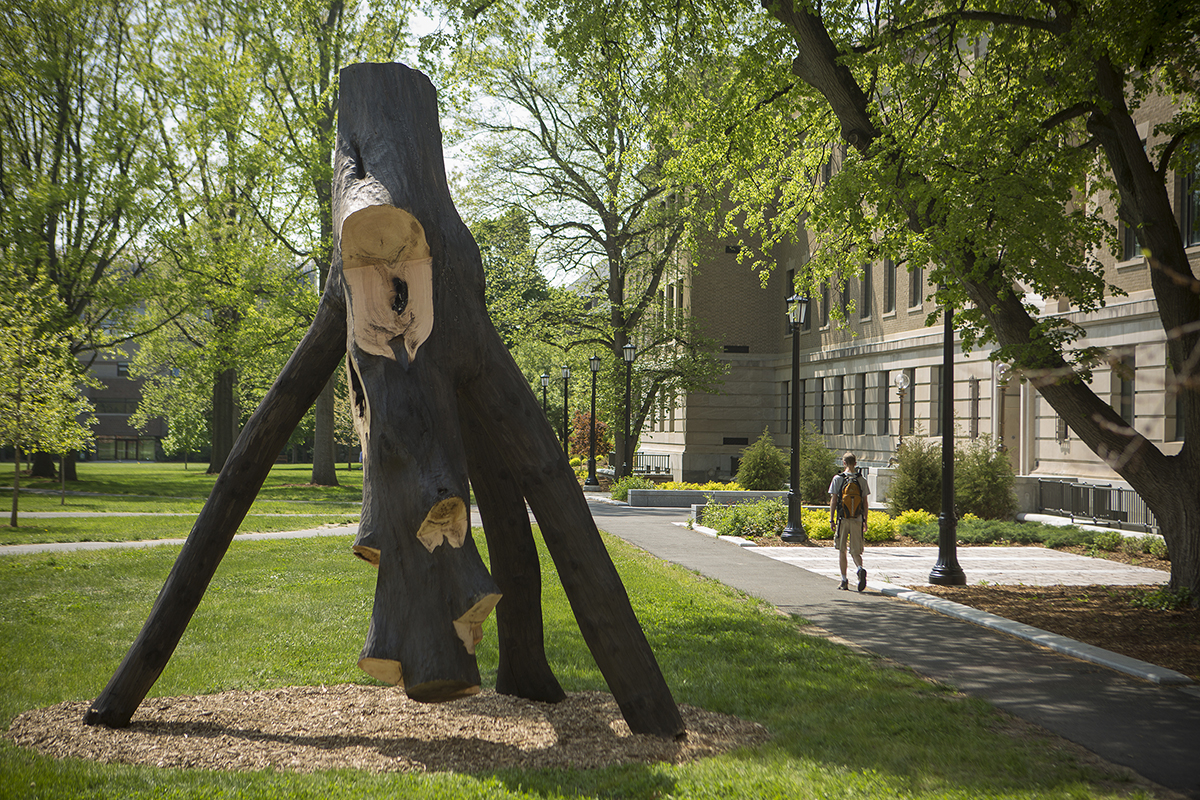Jack Elliott tree sculpture highlights climate justice
By Daniel Aloi

The almost-anthropomorphic shape on the Ag Quad that was once a tree was intended by its creator, artist and associate professor of design and environmental analysis Jack Elliott, to draw attention to climate justice.
The 15-foot-tall red oak statue, “Animus,” is being installed in conjunction with a conference May 24-25 in Warren Hall, “Climate Justice Economics and Philosophy.” It will remain on the quad until mid-June.
The interdisciplinary conference of economists, philosophers and policymakers focuses on distribution and justice in climate change interventions, e.g., ensuring that efforts to curb greenhouse emissions do not harm the poor and vulnerable.
“Climate justice is often considered only a human affair,” Elliott said. “This piece depicts an unfamiliar form, clearly animate, but not quite human or animal or plant, struggling to rise up.”
The climate justice conference is organized by professor of applied economics and management Ravi Kanbur and former Cornell philosophy professor Henry Shue, a senior research associate at the University of Oxford, to build on discussions of climate justice at the 2015 United Nations Sustainable Development Goals summit and Conference of Parties (COP) meeting.
Elliott addresses environmental and ecological issues with his art. He and Kanbur are both Faculty Fellows in Social Sciences, Humanities and Arts, a residency at the Atkinson Center for a Sustainable Future designed to inspire creative collaboration across disciplines and support work in the sustainability arena.
“I took [Kanbur] to my studio; he was interested in environmental art, and thought I could do a piece for the conference,” Elliott said. “Usually my work is not about human issues but biophysical ones, invasive species, forest demographics. He saw the piece and he wanted it.
“I had just positioned it; I didn’t have a theme. He said it’s about struggle, you rise up against the force that is trying to pull you down.”
“Animus” is also about balance, Elliott said, mentioning ecological balance, environmental ethics and Western representations of justice as a blindfolded woman holding a scale.
“There’s one component not touching the ground, just hovering above it, so it’s a precarious balance,” he said. “I wanted it to be a little unclear what it is. However, the sculpture is not just an object; it still has that property of being something that is alive.”
As with some of his previous work with tree forms, Elliott also “attacked any parts of the tree under siege by insects and fungus, and created gashes that shows that it’s a battle; there’s these traces of struggle. You don’t come through without a few scars,” he said. “It’s some necessary surgery, removing the damaged wood, but exposing the inner beauty of the tree at the same time. It gave this piece some direction.”
Media Contact
Get Cornell news delivered right to your inbox.
Subscribe